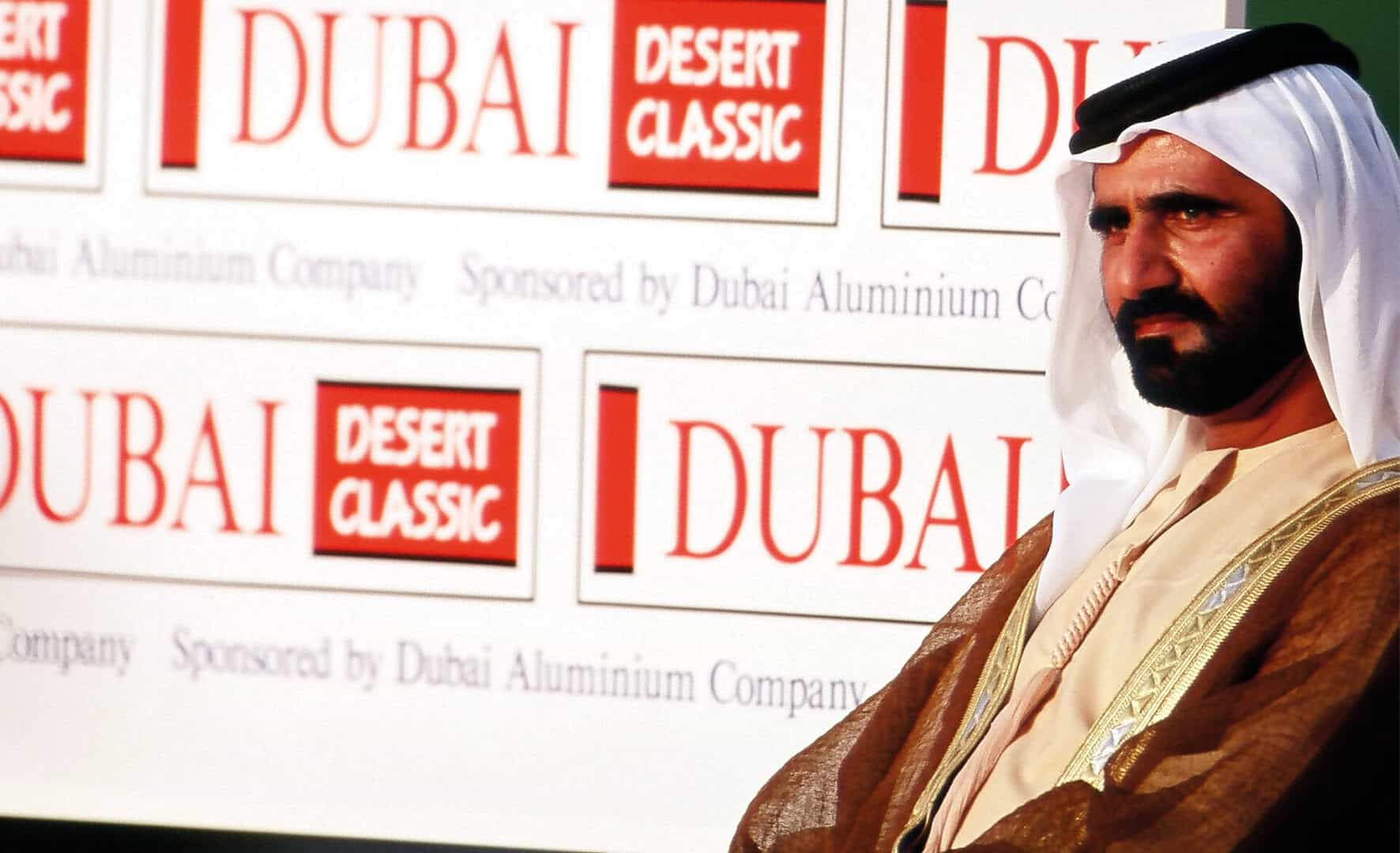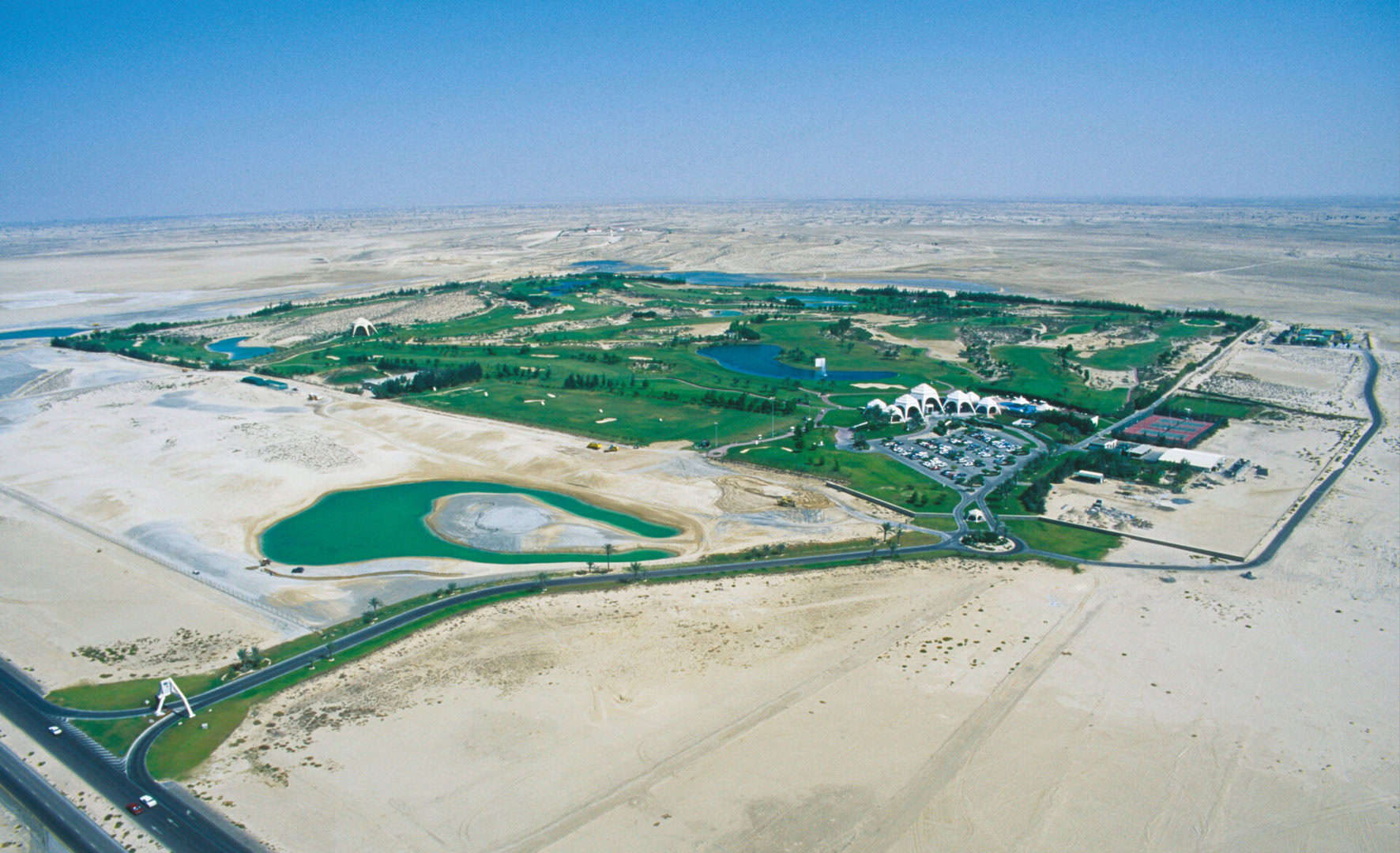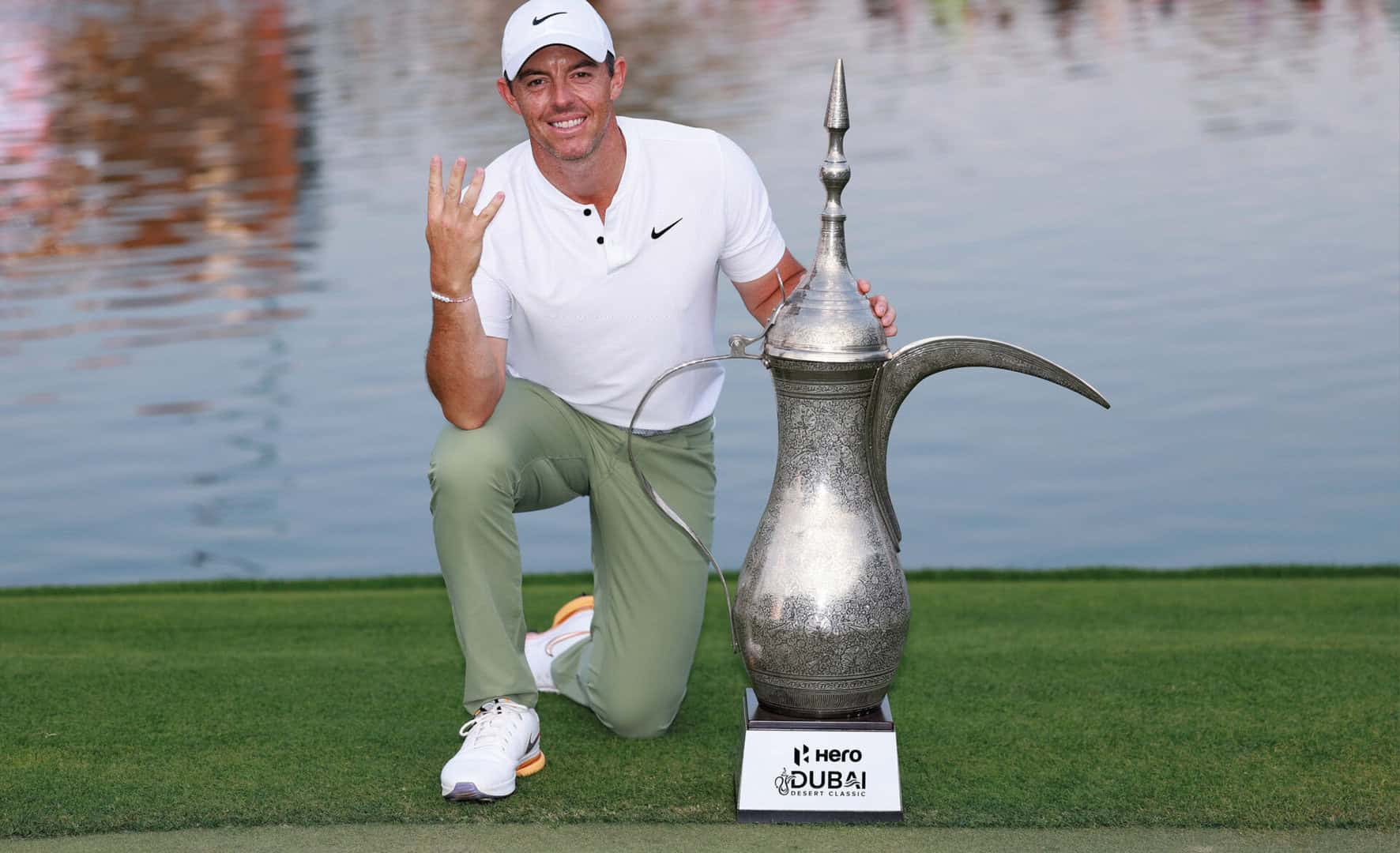It’s difficult to imagine now, but back in 1988, the golfing landscape in the UAE was very different. There were only a few courses littered around the UAE … and they didn’t share a blade of grass between them. Dubai Country Club and Sharjah Wanderers were both sand courses, with ‘browns’ instead of ‘greens,’ and shots played off little astroturf mats on the fairways, which players carried around with them.
Don’t get me wrong, these were beloved community clubs, and those who played them back in the day still get a fond, nostalgic glint in their eye when recounting the days before UAE golf’s equivalent of the Big Bang. But it was a ‘make do’ solution—enabling residents to play the sport they loved in an environment deemed wholly unsuitable for the creation of a grass golf course.

However, Sheikh Mohammed bin Rashid Al Maktoum had other ideas. Dubai had already embarked upon a programme of rapid development and expansion, investing heavily in business and tourism infrastructure, aware that the oil reserves that fuelled its extraordinary growth in the late 1960s and ’70s weren’t going to last forever.
Sheikh Mohammed was the driving force behind this forward-thinking strategy, and when he asked his advisors what else the city needed, they gave an unexpected but intriguing answer.
“Someone on the advisory team suggested that a golf course would attract high-level executives and managers, providing them with a place for social interaction and leisure outside work,” says Dubai Golf’s Chief Executive Officer Chris May as we sit on the clubhouse terrace at Emirates Golf Club overlooking the first tee of the iconic Majlis Course, where the Hero Dubai Desert Classic will get underway this month. “The goal was to create an amenity that would bring key professionals to Dubai and help build the city.
“His Highness selected a piece of land that was relatively undulating compared to the rest of Dubai, which is quite flat. At the time, it was a one-square-kilometre plot of land in the middle of nowhere. His father had already built Jebel Ali Port, which also seemed like a bold idea back then. But their vision for the future was extraordinary—something no one else could foresee.”

The idea of building a championship-standard grass golf course in the middle of the desert seemed preposterous. But build it they did, and in 1988, Emirates Golf Club opened its doors.
“When I arrived in Dubai in 1999, Emirates Golf Club still felt far from the city,” says May. “It was a long drive to get there, and there wasn’t much around. However, it was an amazing engineering feat. A golf course in the middle of the desert required a water supply, which came from the Dubai Aluminium plant. The plant’s byproduct, desalinated water, was used for irrigation. The golf course itself, designed by Karl Litten, remains a testament to sustainable desert design, with the smallest turf area among UAE courses. Today, the club is surrounded by impressive properties, hotels, and skyscrapers, but it has remained a vital asset for the city.”
From being an isolated green oasis surrounded by desert, Emirates Golf Club is now framed by the breathtaking skyline of Dubai Marina and the luxurious Emirates Hills property development, right in the heart of the metropolis now known as ‘New Dubai.’ The club undoubtedly played a part in the growth of the surrounding area.
“I think it definitely did,” concurs May. “If you look at the surrounding developments—the Marina, Emirates Hills, and others—they all benefited from the golf course. Many properties were built to take advantage of the scenic views of the greens, lakes, and landscaping. It’s a chain reaction: real estate grows around the golf course, and new amenities are built to support the community.
“It’s amazing to look back at old photos from 1988. Sheikh Zayed Road was just a two-lane highway, and you could walk from Emirates Golf Club to the beach. Now, it’s a 14-lane highway with a metro system. Walking to the beach today would be quite the challenge!”
The ‘engineering feat’ that was the Majlis Course served as a proof of concept. Over the next decade, more grass courses started to spring up all over the Emirates as the country developed into the global golfing destination it is today.
Another key driver was the arrival of the European Tour (now known as the DP World Tour) in the UAE, a milestone intrinsically linked to the establishment of Emirates Golf Club. Having opened its doors to great fanfare in March 1988, just 12 months later, it hosted the inaugural Dubai Desert Classic—one of the first international professional sports event ever to be held in the country. It was another astute piece of visionary thinking by the Rulers of Dubai, who wanted to use sport as a strategic vehicle to promote the Emirate.
Just as the opening of Emirates Golf Club inspired the development of a multitude of other courses in the region, the Dubai Desert Classic acted as a catalyst to the UAE’s rapid rise as a global sporting powerhouse.
“I think hosting a tournament was always in the back of their minds as a way to promote Dubai,” says May. “To achieve this within a year of opening was remarkable. It was the first European Tour event outside mainland Europe. Organising such a tournament was no small feat, but it was highly successful.”
A European Tour event in Dubai? It was another extremely far-out idea at the time, but the tournament proved an instant hit, with Mark James becoming the inaugural recipient of the now-iconic Dallah Trophy. Over the years, it has been lifted by some of the most famous hands in golf, including Seve Ballesteros, Fred Couples, Ernie Els, Tiger Woods, and, of course, current defending champion and record four-time winner Rory McIlroy.
“The weather in Dubai during the European winter was perfect, and players were greeted with fantastic hospitality, great hotels, and an exceptional golf course,” says May. “The event set new standards for player experience, and its success ensured its place on the calendar for many years. It’s rare for a tournament to stay in the same location for 36 years, making it a unique and iconic event in golf.”
I ask May why he thinks the Hero Dubai Desert Classic has retained such global appeal among players and fans alike for such a long period of time.
“There are several reasons,” he says. “Firstly, the history and prestige of the event make it a tournament that players genuinely want to win. Sharing a trophy with names like Seve Ballesteros, Tiger Woods, and Rory McIlroy is a huge honour. Secondly, the city itself has continuously evolved. Players now stay in world-class hotels, dine at some of the best restaurants, and compete on a course that is always in phenomenal condition.
“For many, starting their season in Dubai is ideal—it’s a great launching pad for the year. Over time, as more tour events have been added in the region, Emirates Golf Club and the Hero Desert Classic remain a benchmark for quality.”
For May, retaining that exceptional level of quality throughout the extraordinary expansion of Dubai’s golf and hospitality offering over the last three decades is Emirates Golf Club’s greatest success.

“I think the club’s single biggest achievement in the last 36 years, in a city that has undergone so much change, is its ability to remain iconic,” he says. “When it was built, it featured an iconic clubhouse building and a pioneering golf course in the middle of the desert—an engineering feat at the time. Over the years, the club has developed into a 36-hole golf facility with floodlights on the Faldo Course.
“The clubhouse has also continued to evolve, now hosting some of the best restaurants in the city. There are many exciting developments still to come. The club continues to innovate to remain relevant to Dubai today, just as it was 36 years ago. I think that’s quite an achievement—to remain the premier club in the region since it was built.
“It’s hard to overstate the importance of this club and the Desert Classic in the region’s growth. Emirates Golf Club set the blueprint for overcoming engineering challenges and creating a sustainable desert course. It proved what was possible and paved the way for other courses and tournaments across the UAE.
“This success also contributed to Dubai’s rise as a sports hub. The Desert Classic showcased the city globally, leading to other international events like tennis, horse racing, and Formula 1 in Abu Dhabi. Sports tourism has become a major draw, with visitors planning holidays around events and enjoying Dubai’s broader offerings.”
The stories of Emirates Golf Club and the Hero Dubai Desert Classic are forever intertwined—both are the product of a bold vision that not only redefined the golfing landscape of the UAE and the Middle East but also laid the foundation for the city’s rise as a global destination for sport, leisure, and tourism.